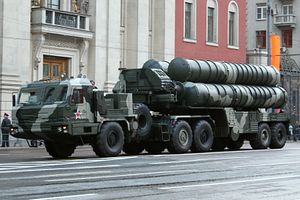Another hundred Chinese People’s Liberation Army (PLA) soldiers have completed a training course on the Russian-made S-400 Triumf long-range, interceptor-based air defense system (NATO reporting name: SA-21 Growler) destined for service in the Chinese People’s Liberation Army’s Rocket Force (PLARF), according to a Russian government source.
The PLA personnel that underwent training in Russia will reportedly be assigned to the second of two S-400 regiments to be stood up by the PLARF.
“About 100 military servicemen from the Chinese People’s Liberation Army who will maintain the second S-400 regiment set, completed a training course to use the S-400 systems in July and returned to their home country,” the source was quoted as saying by TASS news agency on July 31.
The PLA soldiers returned to China as Russia began delivery of the second S-400 regimental set. “A transport vessel with the first batch of hardware from the second S-400 regiment set for China has taken to the sea from the port of Ust-Luga on the Baltic coast,” a Russian government source told TASS news agency on July 24.
The Russian Ministry of Defense (MoD) has neither publicly confirmed the PLA training course nor the begin of the delivery of the S-400 air defense system.
Delivery of the first S-400 regimental set was completed in May 2018. A first batch of around 100 PLA servicemen underwent training on the S-400 air defense system in Russia in the same year. The PLARF completed user trials in December 2018 after reportedly conducting two live fire tests.
Earlier this year, I outlined the usual organizational structure of a S-400 regiment in the Russian military:
The standard S-400 battery consists of four transporter erector launchers (TELs) with four large launch tubes or 16 smaller tubes (or a combination of the two) per TEL, in addition to long-range surveillance radar target acquisition and engagement (fire control) radar systems and a command post (vehicle). In the Russian military, two batteries make up an S-400 battalion (also known as an S-400 division), whereas an S-400 regiment consists of two battalions.
Each TEL can carry four long-range or up to 16 short- and medium-range missiles. An S-400 regiment also possesses additional surveillance and target acquisition radars, with the unit generally plugged in to larger long-range radar stations or airborne early warning systems. It is, however, unclear whether Russia has developed such a so-called Cooperative Engagement Capability (CEC)
The organizational structure of the two PLARF regiments will broadly align with this, although the exact number of TELs and missiles delivered has not been disclosed. Total procurement costs for the two regiments are estimated at around $3 billion. China was the first international customer to place an order for the S-400 in 2014.
The U.S. imposed sanctions in September 2018 on the People’s Liberation Army’s (PLA) Equipment Development Department (EDD) for the procurement of S-400 air defense systems and Sukhoi Su-35S (NATO reporting name: Flanker-E) fighters.






























